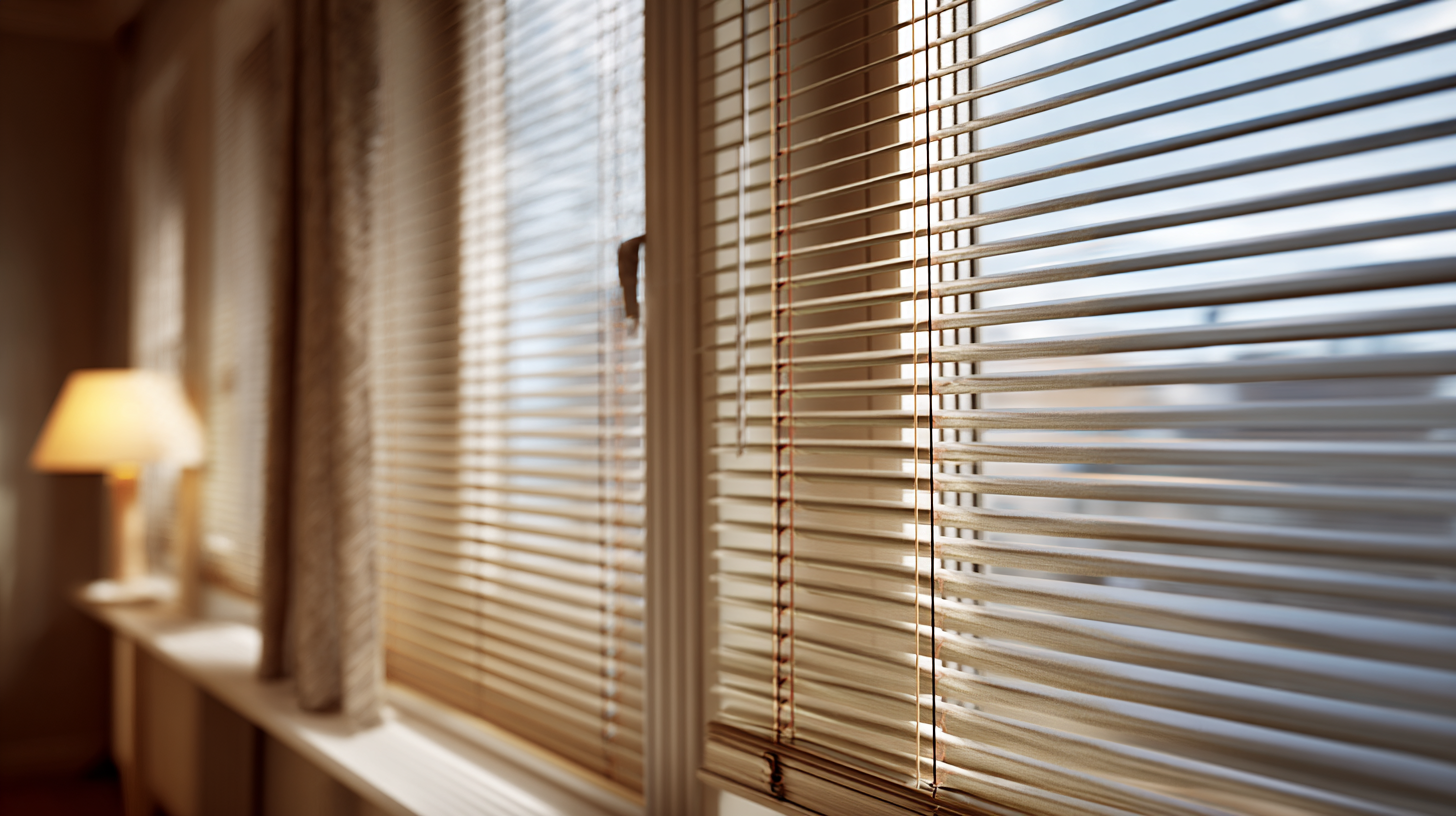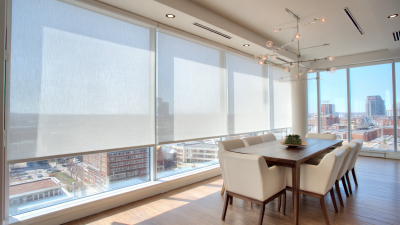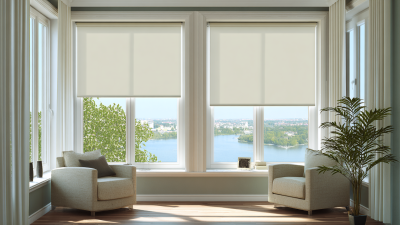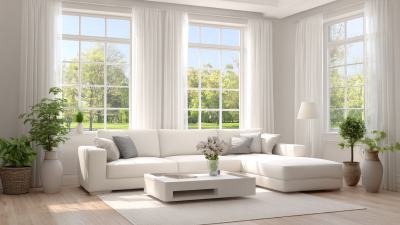BLOG
Transform Your Living Space with Smart Automatic Blinds and Energy Efficiency Insights
In the quest for a more sustainable and stylish living environment, the integration of automatic blinds emerges as a revolutionary solution. These innovative window treatments not only offer convenience but also play a pivotal role in enhancing energy efficiency within our homes. By adjusting automatically to the position of the sun and the indoor temperature, automatic blinds help maintain a comfortable ambiance while reducing reliance on heating and cooling systems. As homeowners increasingly seek ways to optimize energy consumption, understanding how to effectively implement and utilize these smart solutions becomes essential.

In this guide, we will explore the myriad benefits of automatic blinds, including their impact on energy savings, the importance of proper installation, and tips for selecting the ideal type for your living space. Embrace the future of home design and discover how automatic blinds can transform your environment while promoting sustainability and comfort.
Understanding the Benefits of Smart Automatic Blinds for Modern Homes
Smart automatic blinds represent a significant advancement in modern home technology, blending convenience, energy efficiency, and aesthetic appeal. With the automated shading systems market projected to grow substantially, it is estimated to reach a size of USD 58.5 billion by 2034, with a compound annual growth rate (CAGR) of 8.99%. This growth reflects a heightened consumer awareness about energy-saving solutions and the integration of smart technologies into everyday living spaces.
These blinds not only provide the luxury of control over natural light but also contribute to substantial energy savings. By utilizing motorized blinds, homeowners can efficiently manage indoor temperatures, reducing reliance on heating and cooling systems. Reports indicate that 78% of households that adopt smart home technologies experience measurable improvements in comfort and energy efficiency. Moreover, the trend towards integrating automated shading with Internet of Things (IoT) capabilities is turning these window treatments from mere convenience into essential components of energy-saving home infrastructure, ensuring homes remain both stylish and sustainable.
How Smart Blinds Enhance Energy Efficiency and Reduce Utility Bills
Smart automatic blinds are revolutionizing the way we manage our living spaces, particularly when it comes to enhancing energy efficiency and lowering utility bills. By using advanced sensors and smart technology, these blinds can automatically adjust to changing sunlight patterns throughout the day. According to a report by the Department of Energy, window coverings can reduce energy loss by up to 30%. This means that by incorporating smart blinds, homeowners can significantly decrease their heating and cooling costs, especially in climates with extreme temperatures.
To maximize the benefits of smart blinds, consider the following tips: first, set the blinds to close during peak sun exposure to keep your home cooler in summer months. Additionally, schedule them to open during the morning to utilize natural light for heating purposes in cooler months, thus reducing reliance on artificial heating. Lastly, integrating these blinds with a smart home system enables you to control them remotely, allowing for optimal adjustments based on real-time weather data and personal preferences.
Investing in smart automatic blinds not only contributes to a more comfortable living environment but also aligns with sustainable practices. As energy costs continue to rise, leveraging technology in your home can be a proactive step towards greater energy efficiency and reduced utility bills.
Integrating Smart Technology: Features to Look for in Automatic Blinds
When integrating smart technology into your home, automatic blinds offer a perfect blend of convenience and efficiency. According to a recent report by Grand View Research, the smart blinds market is projected to reach $8.9 billion by 2027, with increasing consumer demand for energy-efficient home solutions driving this growth. Smart automatic blinds not only enhance the aesthetic appeal of your living space but also play a significant role in managing energy consumption. By automatically adjusting to the position of the sun, these blinds can reduce heat gain during the summer and provide warmth in the winter.

When selecting automatic blinds, several key features should be considered. Look for options with integrated sensors that respond to ambient light levels, allowing your blinds to open and close automatically throughout the day. Additionally, connectivity options such as compatibility with smart home systems like Amazon Alexa or Google Assistant provide seamless control via voice commands or mobile apps. Research indicates that homes equipped with smart technology can achieve energy savings of up to 30% annually, making the investment in automatic blinds not only a style choice but a significant step toward sustainability.
Tips for Choosing the Right Automatic Blinds for Your Living Space
When considering smart automatic blinds for your living space, it’s essential to choose the right ones that align with your lifestyle and energy efficiency goals. According to a 2022 report from the American Council for an Energy-Efficient Economy, installing automated window treatments can lead to energy savings of up to 30% on heating and cooling costs. This makes your choice not only a matter of aesthetics but also a strategic move toward a sustainable home.
**Tips for Choosing the Right Automatic Blinds:**
1. **Material Matters:** Opt for high-quality fabrics that provide effective insulation. Energy-efficient materials, such as cellular shades, can trap air and reduce energy loss substantially.
2. **Smart Features:** Look for blinds that can integrate with your home automation system. Features like light sensors and timers enhance convenience and maximize energy savings by adjusting according to the time of day or sunlight.
3. **Size and Fit:** Ensure that the blinds fit your windows perfectly. Poorly fitted blinds can lead to drafts and diminished energy efficiency. Measuring your windows accurately will help you find the best match.
By prioritizing these factors, you can transform your living space into a stylish and energy-efficient haven.
Energy Efficiency Benefits of Smart Automatic Blinds
Maximizing Comfort and Aesthetics with Customizable Smart Blinds Solutions
Smart automatic blinds are quickly becoming an integral part of modern home design, merging functionality with aesthetic appeal. According to a recent report by the International Window Coverings Association, homeowners who invest in smart blinds can save up to 30% on energy costs by optimizing natural light and regulating indoor temperatures. Customizable smart blinds offer an innovative solution that seamlessly blends comfort with style, allowing users to adjust settings via smartphone apps or integrated home automation systems. This level of personalization not only enhances the living space but also contributes to an energy-efficient lifestyle.

Moreover, as sustainability becomes a priority for homeowners, the demand for energy-efficient solutions is projected to rise. Smart blinds are a key player in this trend, providing advanced features such as solar tracking and automated schedules that adjust based on sun exposure. According to estimates from the Smart Blinds Association, the global smart blinds market is expected to grow significantly, potentially reaching $1.5 billion by 2025. With these advanced technologies, homeowners can maximize both visual appeal and energy savings, making smart blinds an essential addition to any modern living space.




